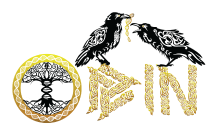HomeBrew Yeast Capture Kit Tutorial
This tutorialgoes through how to sample wild yeast, culture and isolate it, then amplify and sequence its DNA to check what strain you’ve found.
You can do this a million different ways and are welcome to experiment. The basic ideais that the yeast is everywhere-- it’s in the air, it’s on your beard, it’s on plants and their fruits. However, there’s a lot of other microbes out there-- like bacteria, other fungi and yeasts aren’t useful for brewing. So, getting yeast is pretty easy, but isolating a useful strain is more difficult.
The kit comes with…
15mL tubes of tris buffer
YPED plates with antibiotic
Cotton swabs
Primers,
mastermix
tubes for PCR
Inoculation loops
Sequencing Credits for 2 samples
Clear plastic transfer pipettes
Then the steps are…
-
Find and swab some fruits, then stir each sample into a tube buffer
(sugar-producing plants like fruits, sap on trees, some flowers)
-
Pipette a sample from the buffer onto a plate (The media on the plates has antibiotics to kill the unwanted bacteria and nutrients to feed the yeast.)
If you don’t have access to a PCR machine, then you can take these samples and grow them up to start brewing.
Otherwise continue to...
-
Grow the sample on the plate, PCR it- and make sure to re-plate each sample that you PCR.
-
Optional: Run a gel to check the result of your PCR
-
Sequence your PCR samples
Steps with photos and descriptions...
Find and swab some fruits: go out and find some wild yeast. It’s everywhere, but the best places to find it are sugar producing plants like fruits, berries, or on tree sap. Just cotton swab the surface of the plant. You can also sample random surfaces (like inside your favorite brewery or your friend’s beard, though you should probably ask first in both cases).
Cotton swab example: rub the cotton against the surface of the fruit, stir the tip of the cotton swab into the tube of buffer.
(Alternatives to try: you can also experiment with different ways of acquiring the yeast. For example, you could leave a plate open to the air for an hour or two, or you could take a cotton swab from a fruit and streak it directly onto a plate, or you could drop a berry of flower bud straight into the buffer.)
Pipette some of the buffer/sample mixture onto a plate: using a fresh clear plastic dropper pipette, move a sample from the tube onto a plate. For each sample, use a fresh dropper pipette and separate plate.
If you don’t have access to a PCR machine, or don’t care to know what strain you have, then you can take these samples and grow them up for brewing.
(To do this, simply select an isolated yeast strain using an inoculation loop and stir it into ~ 10mL of YPD media or boiled wert to get it going. To make sure you get an isolated yeast strain, sample from a plate with colonies that all look the same. You may want to re-plate samples to check if it looks like a single strain.)
PCR:
When you see growth on the plate ( ~ a day or two later), you can do PCR to amplify your strain’s DNA and prepare it for sequencing. For PCR you’ll need to mix together:
-
39uL H2O
-
A sample from your yeast culture
-
10uL PCR master mix
-
1uL yeast primers mix (.5 ea primer)
Start with the water.
To add the yeast, get a really tiny sample using the tip of a pipette:
Put the sample from the pipette tip into the PCR tube solution
Directly after, drag the pipette tip lightly along the surface of the plate. This way you know you have a plate of exactly the strain you did PCR with.
Then add the primers and mastermix last.
If you’re using a PCR without a heated lid, be sure to add 30-40uL of mineral oil on top of the sample to prevent evaporation.
Sequencing:
In the kit we provide an envelop and sequencing coupons with ACGT inc sequencing: http://www.acgtinc.com/. You’ll need to create an account, enter a coupon number, and mail in the sample.
Thank you and good luck.
Team ODIN
